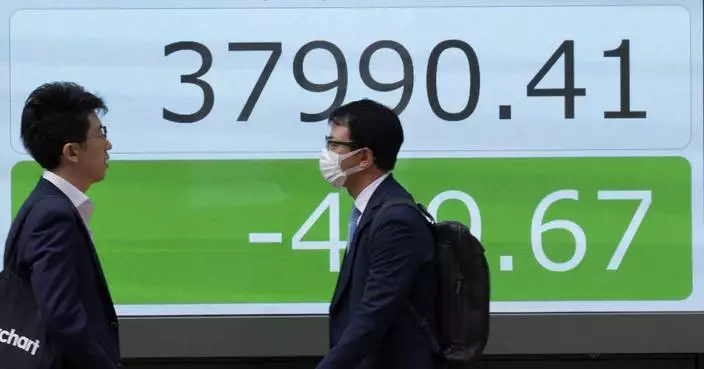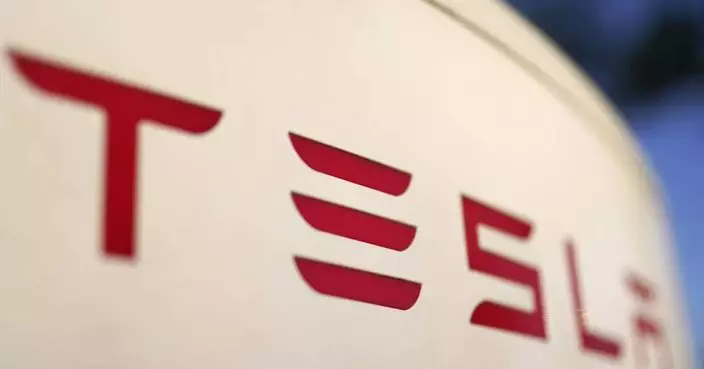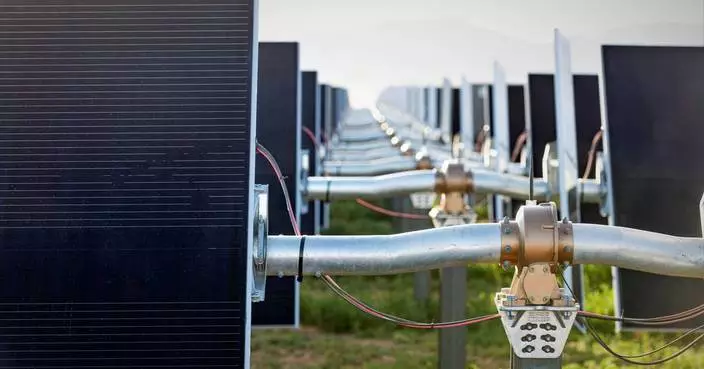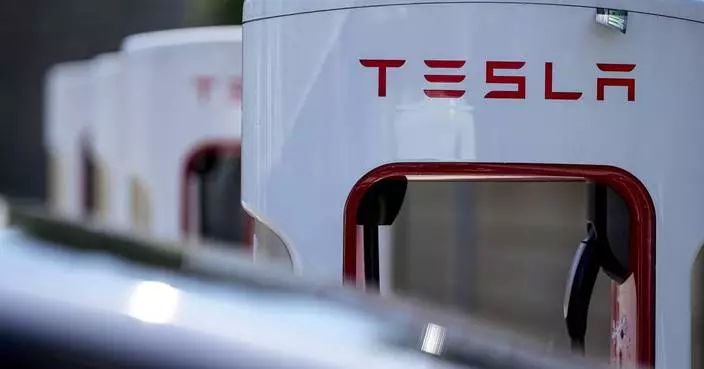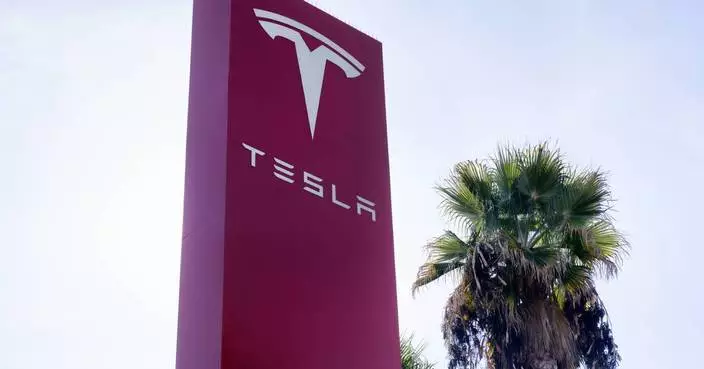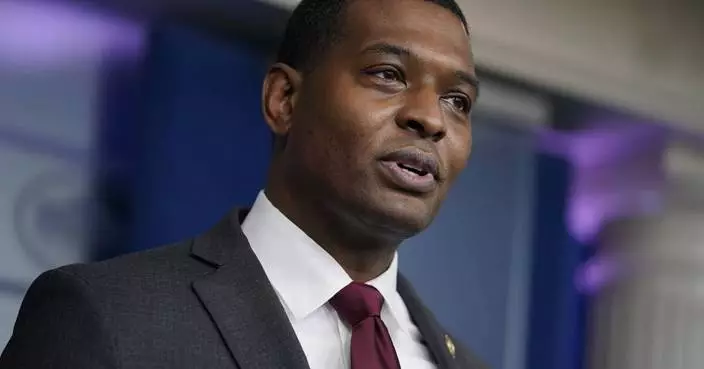After more than a decade of making cars and SUVs — and, more recently, solar panels — Tesla Inc. wants to electrify a new type of vehicle: big trucks.
The company unveiled its new electric semitractor-trailer Thursday night near its design center in Hawthorne, California.
CEO Elon Musk said the semi is capable of traveling 500 miles (804 kilometers) on an electric charge — even with a full 80,000-pound (36,287-kilogram) load — and will cost less than a diesel semi considering fuel savings, lower maintenance and other factors. Musk said customers can put down a $5,000 deposit for the semi now and production will begin in 2019.
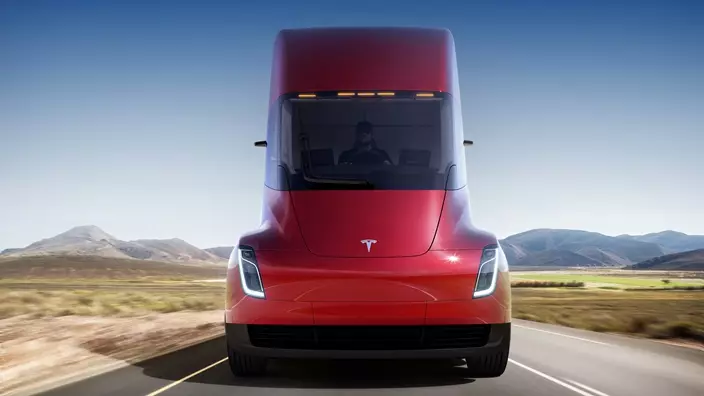
This photo provided by Tesla shows the front of the new electric semitractor-trailer unveiled on Thursday, Nov. 16, 2017. The move fits with Tesla CEO Elon Musk's stated goal for the company of accelerating the shift to sustainable transportation. (Tesla via AP)
"We're confident that this is a product that's better in every way from a feature standpoint," Musk told a crowd of Tesla fans gathered for the unveiling. Musk didn't reveal the semi's price.
Even so, the company already is starting to get orders. Wal-Mart Stores Inc., the world's largest retailer, said in a statement Friday that it has pre-ordered five Tesla units in its Walmart U.S. division and 10 units at Walmart Canada. Midwest retailer Meijer said it has reserved four trucks. And Arkansas trucking company J.B. Hunt said it has reserved "multiple" tractors that it will deploy on the West Coast but didn't specify how many.
The truck will have Tesla's Autopilot system, which can maintain a set speed and slow down automatically in traffic. It also has a system that automatically keeps the vehicle in its lane. Musk said several Tesla semis will be able to travel in a convoy, autonomously following each other.
Musk said Tesla plans a worldwide network of solar-powered "megachargers" that could get the trucks back up to 400 miles of range after charging for only 30 minutes.
The move fits with Musk's stated goal for the company of accelerating the shift to sustainable transportation. Trucks account for nearly a quarter of transportation-related greenhouse gas emissions in the U.S., according to government statistics.
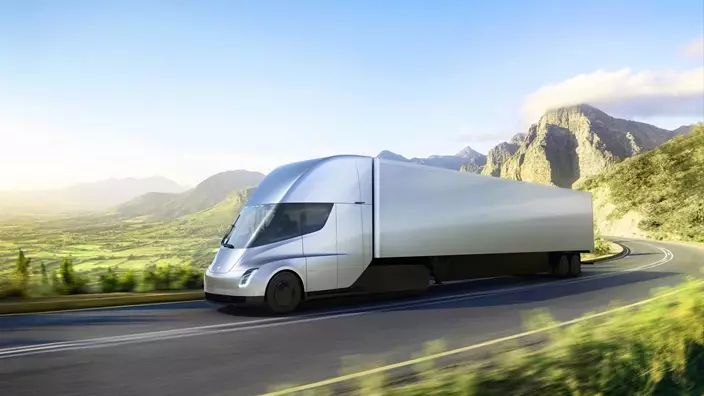
This photo provided by Tesla shows the new electric semitractor-trailer unveiled on Thursday, Nov. 16, 2017. The move fits with Tesla CEO Elon Musk's stated goal for the company of accelerating the shift to sustainable transportation. (Tesla via AP)
But the semi also piles on more chaos at the Palo Alto, California-based company. Tesla is way behind on production of the Model 3, a new lower-cost sedan, with some customers facing waits of 18 months or more. It's also ramping up production of solar panels after buying Solar City Corp. last year. Tesla is working on a pickup truck and a lower-cost SUV and negotiating a new factory in China. Meanwhile, the company posted a record quarterly loss of $619 million in its most recent quarter.
On Thursday night, Tesla surprised fans with another product: An updated version of its first sports car, the Roadster. Tesla says the new Roadster will have 620 miles of range and a top speed of 250 mph (402 kph). The car, coming in 2020, will have a base price of $200,000.
Musk, too, is being pulled in many directions. He leads rocket maker SpaceX and is dabbling in other projects, including high-speed transit, artificial intelligence research and a new company that's digging tunnels beneath Los Angeles to alleviate traffic congestion.
"He's got so much on his plate right now. This could present another distraction from really just making sure that the Model 3 is moved along effectively," said Bruce Clark, a senior vice president and automotive analyst at Moody's.
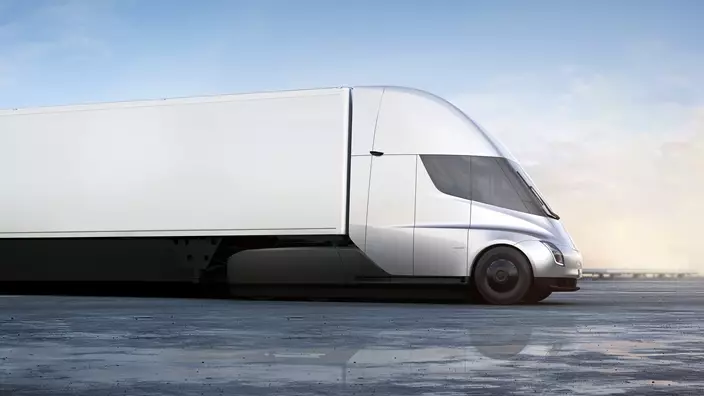
This photo provided by Tesla shows the front of the new electric semitractor-trailer unveiled on Thursday, Nov. 16, 2017. The move fits with Tesla CEO Elon Musk's stated goal for the company of accelerating the shift to sustainable transportation. (Tesla via AP)
Tesla's semi is venturing into an uncertain market. Demand for electric trucks is expected to grow over the next decade as the U.S., Europe and China all tighten their emissions regulations. Electric truck sales totaled 4,100 in 2016, but are expected to grow to more than 70,000 in 2026, says Navigant Research.
But most of that growth is expected to be for smaller, medium-duty haulers like garbage trucks or delivery vans. Those trucks can have a more limited range of 100 miles (160 kilometers) or less, which requires fewer expensive batteries. They can also be fully charged overnight.
Long-haul semi trucks, on the other hand, would be expected to go greater distances, and that would be challenging. Right now, there's little charging infrastructure on global highways. Without Tesla's promised fast-charging, even a mid-sized truck would likely require a two-hour stop, cutting into companies' efficiency and profits, says Brian Irwin, managing director of the North American industrial group for the consulting firm Accenture.
Irwin says truck companies will have to watch the market carefully, because tougher regulations on diesels or an improvement in charging infrastructure could make electric trucks more viable very quickly. Falling battery costs also will help make electric trucks more appealing compared to diesels.
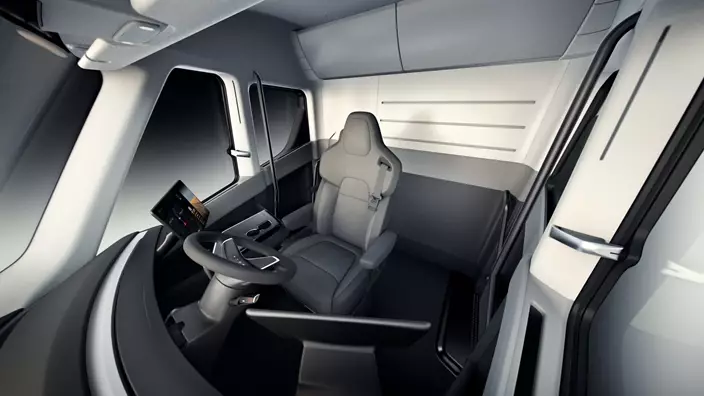
This photo provided by Tesla shows the interior overview of the new electric semitractor-trailer unveiled on Thursday, Nov. 16, 2017. The move fits with Tesla CEO Elon Musk's stated goal for the company of accelerating the shift to sustainable transportation. (Tesla via AP)
But even lower costs won't make trucking a sure bet for Tesla. It faces stiff competition from long-trusted brands like Daimler AG, which unveiled its own semi prototype last month.
"These are business people, not fans, and they will need convinced that this truck is better for their balance sheet than existing technology. It probably is, based on the specs provided, but this isn't necessarily a slam dunk," said Rebecca Lindland, an executive analyst at Kelley Blue Book.
Musk said Tesla will guarantee the semi's powertrain for one million miles to help alleviate customers' concerns.
DETROIT (AP) — The U.S. government's auto safety agency is investigating whether last year's recall of Tesla's Autopilot driving system did enough to make sure drivers pay attention to the road.
The National Highway Traffic Safety Administration says in documents posted on its website Friday that Tesla has reported 20 more crashes involving Autopilot and since the recall. The crashes and agency tests raised concerns about the effectiveness of the remedy. The recall involved more than 2 million vehicles, nearly all the vehicles that Tesla had sold at the time.
The agency pushed the company to do the recall after a two-year investigation into Autopilot's driver monitoring system, which measures torque on the steering wheel from a driver's hands. In the probe, the agency was looking at multiple cases in which Teslas on Autopilot ran into emergency vehicles parked on freeways.
The recall fix involves an online software update to increase warnings to drivers. But the agency said in documents that it has found evidence of crashes after the fix, and that Tesla tried to address problems with additional software updates after the recall fix was sent out. The updates may not have worked.
“This investigation will consider why these updates were not part of the recall or otherwise determined to remedy a defect that poses an unreasonable safety risk,” the agency wrote.
A message was left early Friday seeking comment from Tesla.
NHTSA said that Tesla reported the 20 crashes in vehicles that had received the recall software fix. The agency has required Tesla and other automakers to report crashes involving partially and fully automated driving systems.
NHTSA said it will evaluate the recall, including the “prominence and scope” of Autopilot’s controls to address misuse, confusion and use in areas that the system is not designed to handle.
It also said that Tesla has stated that owners can decide whether they want to opt in to parts of the recall remedy, and that it allows drivers to reverse parts of it.
Safety advocates have long expressed concern that Autopilot, which can keep a vehicle in its lane and a distance from objects in front of it, was not designed to operate on roads other than limited access highways.
The investigation comes just one week after a Tesla that may have been operating on Autopilot hit and killed a motorcyclist near Seattle, raising questions about whether a recent recall went far enough to ensure Tesla drivers using Autopilot pay attention to the road.
After the April 19 crash in a suburban area about 15 miles (24 kilometers) northeast of the city, the driver of a 2022 Tesla Model S told a Washington State Patrol trooper that he was using Autopilot and looked at his cellphone while the Tesla was moving.
“The next thing he knew there was a bang and the vehicle lurched forward as it accelerated and collided with the motorcycle in front of him,” the trooper wrote in a probable-cause document.
The 56-year-old driver was arrested for investigation of vehicular homicide “based on the admitted inattention to driving, while on Autopilot mode, and the distraction of the cell phone while moving forward, putting trust in the machine to drive for him,” the affidavit said.
The motorcyclist, Jeffrey Nissen, 28, of Stanwood, Washington, was pronounced dead at the scene, authorities reported.
Authorities said they have not yet independently verified whether Autopilot was in use at the time of the crash.
On Thursday, NHTSA ended its investigation of Autopilot, citing the recall and the investigation of its effectiveness. The agency said it found evidence “that Tesla's weak driver engagement system was not appropriate for Autopilot's permissive operating capabilities.”
Tesla, the leading manufacturer of EVs, reluctantly agreed to the recall last year after NHTSA found that the driver monitoring system was defective.
The system sends alerts to drivers if it fails to detect torque from hands on the steering wheel, a system that experts describe as ineffective. Although many newer Teslas have cameras that can watch the driver, they can't see at night, and independent testing shows that Autopilot can still be used even if the cameras are covered.
The Associated Press reported shortly after the recall that experts said the fix relied on technology that may not work.
Research conducted by NHTSA, the National Transportation Safety Board and other investigators show that merely measuring torque on the steering wheel doesn’t ensure that drivers are paying sufficient attention. Experts say night-vision cameras are needed to watch drivers’ eyes to ensure they’re looking at the road.
Michael Brooks, executive director of the nonprofit Center for Auto Safety, said NHTSA is looking into where Tesla allows Autopilot to be used.
The company doesn’t limit its use, even though it was designed to operate on limited access freeways. Tesla, he said, appears to rely on computers to decide whether Autopilot can operate rather than maps that show a vehicle’s location.
“When you hit that point where you're in the area where Autopilot wasn't designed to operate and the car knows it's in that area, why is it still allowed to engage?” he asked.
Brooks said NHTSA could seek civil fines and additional fixes from Tesla.
Government documents filed by Tesla in the December recall say the online software change will increase warnings and alerts to drivers to keep their hands on the steering wheel.
NHTSA began its Autopilot crash investigation in 2021, after receiving 11 reports that Teslas that were using Autopilot struck parked emergency vehicles. In documents explaining why the investigation was ended, NHTSA said it ultimately found 467 crashes involving Autopilot resulting in 54 injuries and 14 deaths.
Tesla offers two partially automated systems, Autopilot and a more sophisticated “Full Self Driving,” but the company says neither can drive themselves despite their names.
In investigative documents, NHTSA said it found 75 crashes and one death involving “Full Self Driving.” It's not clear whether the system was at fault.
CEO Elon Musk for several years has said “Full Self Driving” will allow a fleet of robotaxis to generate income for the company and owners, making use of the electric vehicles when they would have been parked. Musk has been touting self-driving vehicles as a growth catalyst for Tesla since “Full Self Driving” hardware went on sale late in 2015. The system is being tested on public roads by thousands of owners.
In 2019, Musk promised a fleet of autonomous robotaxis by 2020 that would make Teslas appreciate in value. Instead, they’ve declined with price cuts, as the autonomous robotaxis have been delayed year after year while being tested by owners as the company gathers road data for its computers.
Tesla says neither system can drive itself and that drivers have to be ready to take control at all times.
Neither Musk nor other Tesla executives on Tuesday’s earnings conference call would specify when they expect Tesla vehicles to drive themselves as well as humans do. Instead, Musk touted the latest version of “Full Self Driving” and said that “it’s only a matter of time before we exceed the reliability of humans, and not much time at that.”
Musk went on to insist that “if somebody doesn’t believe that Tesla is going to solve autonomy, I think they should not be an investor in the company.”
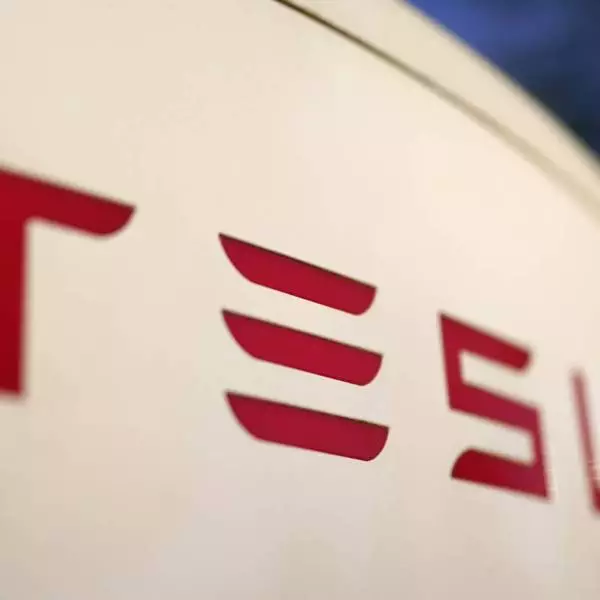
US probes whether recall of Tesla Autopilot driving system did enough to make sure drivers attention
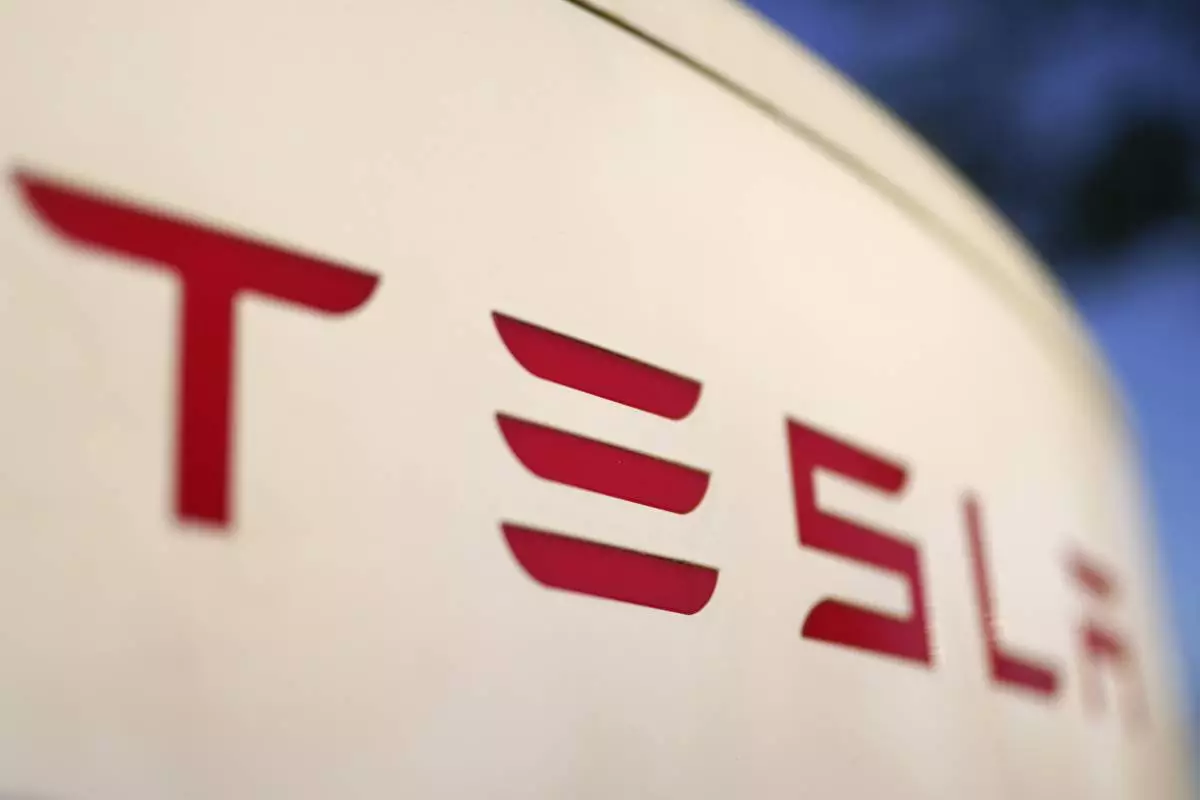
FILE - The logo for the Tesla Supercharger station is seen in Buford, Ga, April 22, 2021. Faced with falling global sales and a tumbling stock price, Tesla has slashed prices again on some of its electric vehicles and its “Full Self Driving” system. Tesla releases first-quarter earnings Tuesday, April 23, 2024. (AP Photo/Chris Carlson, File)
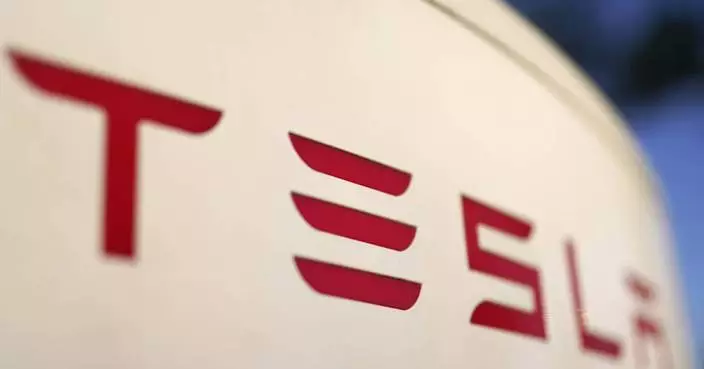
US probes whether recall of Tesla Autopilot driving system did enough to make sure drivers attention










